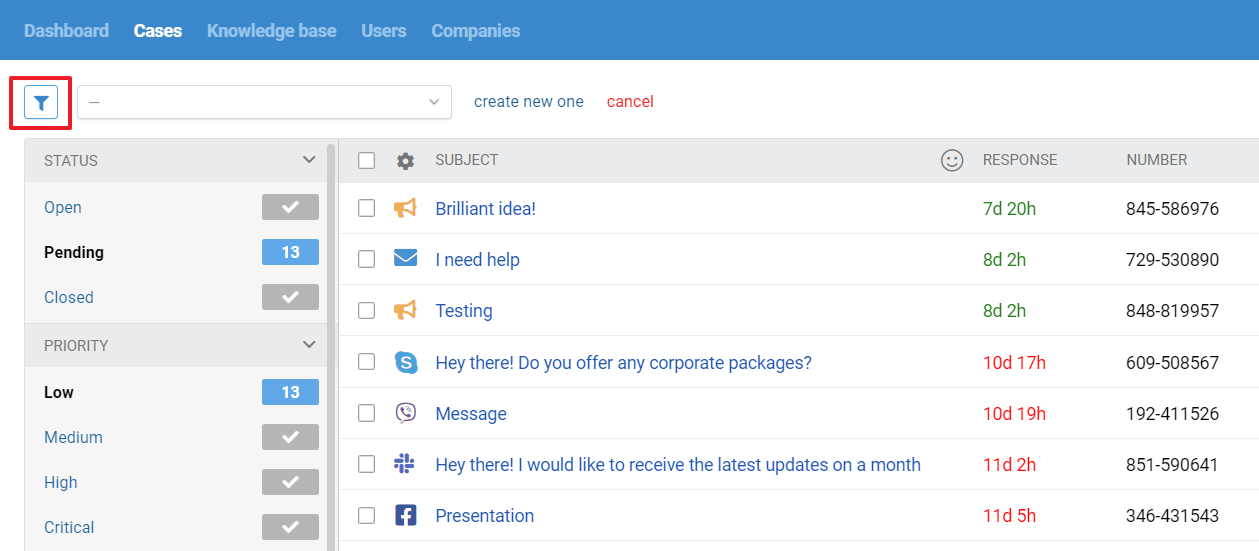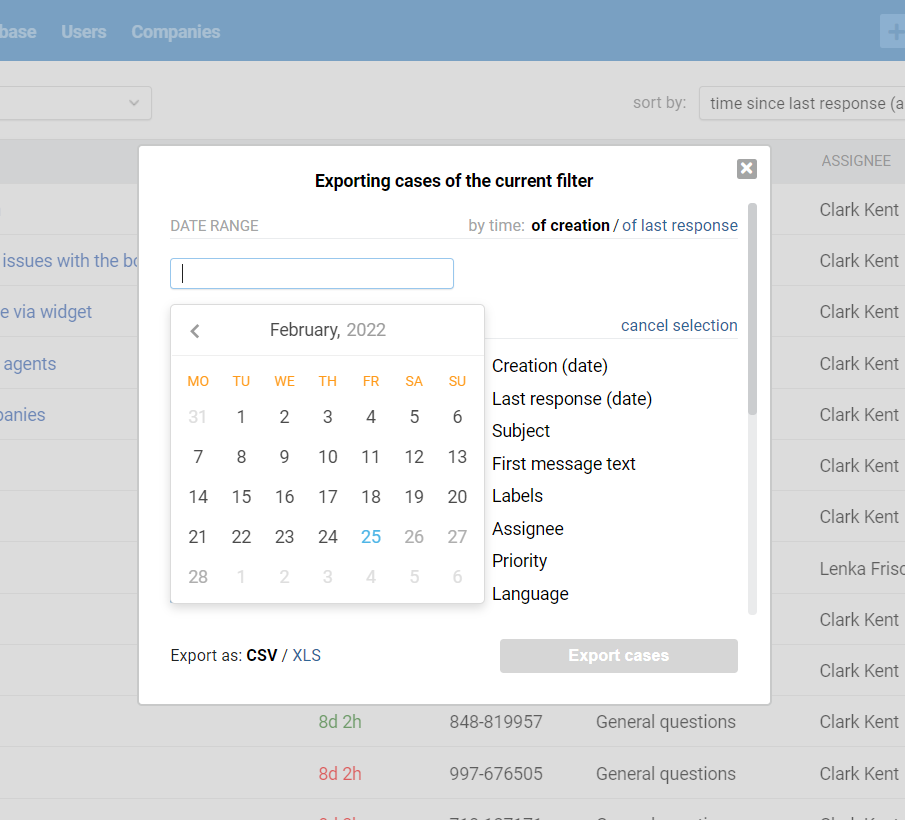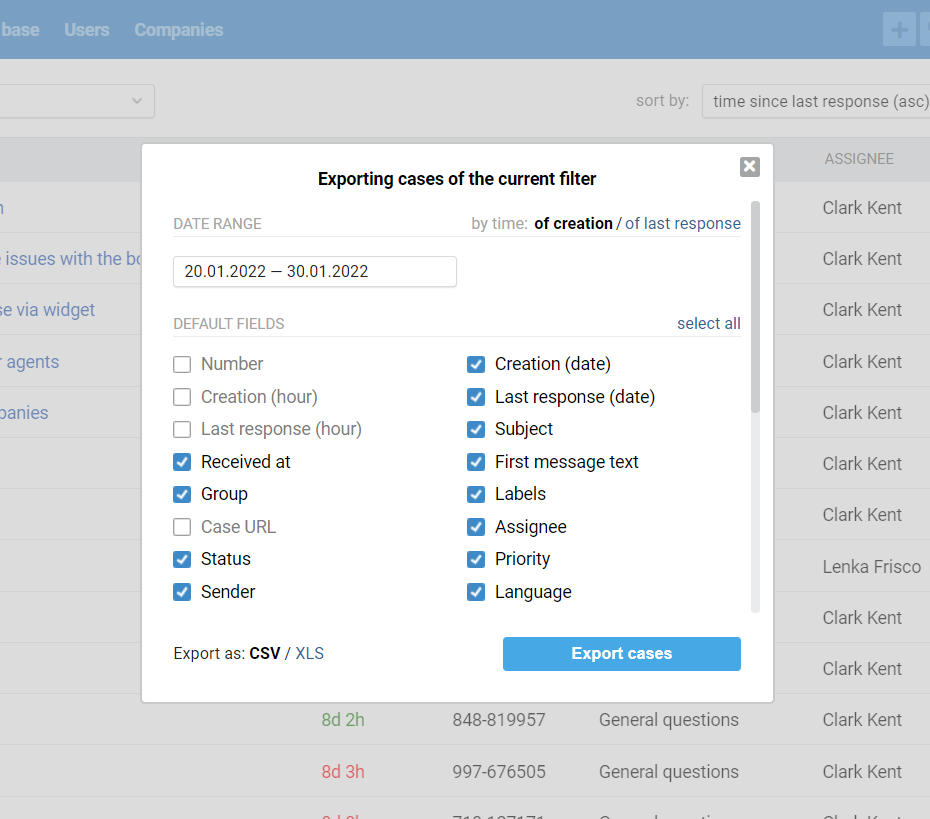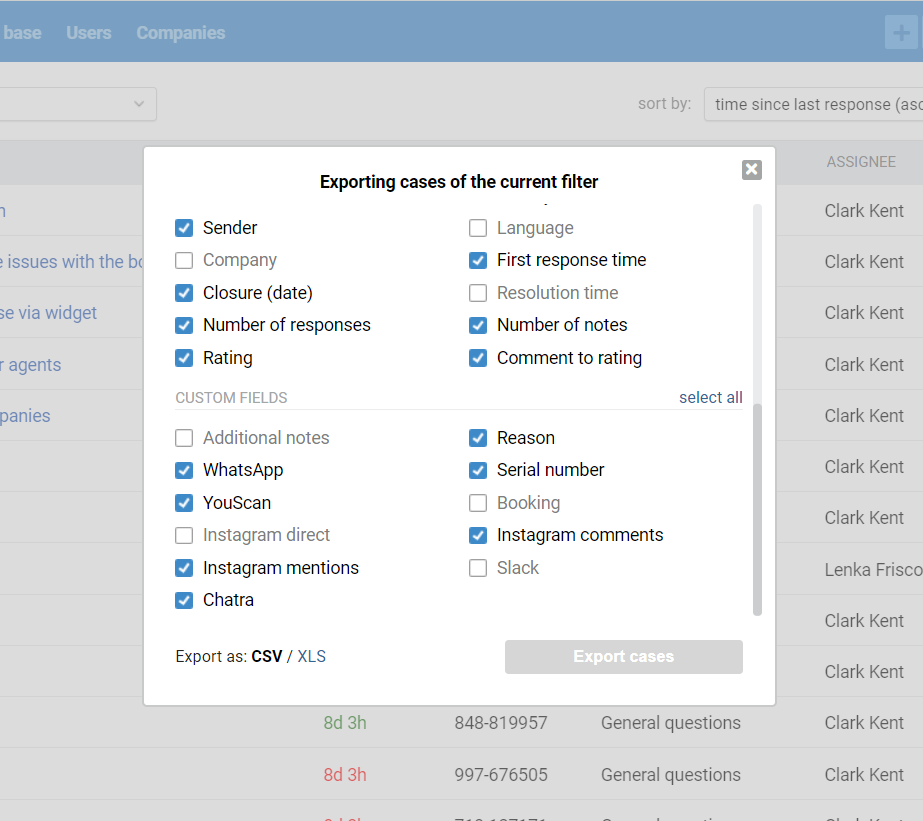Export is intended for viewing and analyzing case data. With export, you can:
1. View the number of received cases for a random time period. For example, you can see how many cases have been received today, on specific days in the calendar, etc.
2. View statistical data: time and date when the case was received, time and date of the last response, speed of the first response, closing speed, number of responses for closing, rating of the agents' responses, comment on the rating.
3. View cases' parameters: number, subject, assignee, recipient, sender, status, priority, group, and labels.
4. View additional data: created and added custom fields for both cases and users.
Many customers use export for reporting, as Excel allows to flexibly filter data and analyze it thoroughly.
Export works through the icon in the upper right corner of the agent's account:

Please note, that while exporting the values set in the case list filter are taken into account:

When you click on the Export icon, a modal window appears where you need to select the date range and data fields:

It is the selected fields that will end up in the export list:

You can add both standard fields and custom fields to the export list:

The exporting period can be set either by the time the case was created or by the time of the last response (from a user or agent) in the case.
When you do an export, we first get all the necessary cases from the database, and after that, we generate the file. If there are many cases, both stages are complicated and take plenty of time, so please be patient.
The list of cases can be exported either in CSV or XLS. But when trying to create an XLS file with thousands of lines, the process takes a long time, and the file itself is too large. Therefore, if more than 10,000 cases get into the export, regardless of your choice, a CSV file will be generated: it is generated much faster, and all spreadsheet editors open it without problems.
Please keep in mind that the export considers the current state of the case list. Let's say, the assignee was appointed to a new case on October 31, and on November 1, the case was reassigned to another agent. So, if you are exporting data on November 2, the second agent will be indicated as the assignee to this case.
